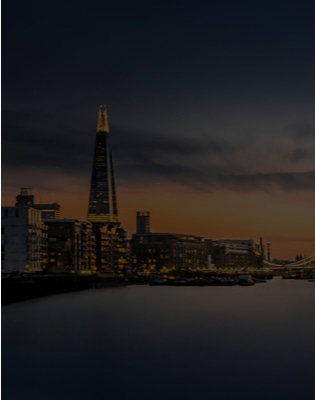AIE Update - Right to Know CLG v Commissioner for Environmental Information & Raheenleagh Power DAC Supreme Court Determination
This article examines the key issues raised before the Supreme Court in relation to the question of whether a private energy generator can be considered a "public authority" for the purpose of the Access to Information on the Environment Regulations 2007 (the AIE Regulations).
Speed read
On 17 January 2023, the Supreme Court issued its determination and agreed to hear an appeal from the Court of Appeal in Right to Know CLG v Commissioner for Environmental Information & Raheenleagh Power DAC [2023] IESCDET2. The determination process is a preliminary screening stage which needs to be passed in order to have a case heard by the Supreme Court. The substantial hearing on the issue itself is yet to be heard by the Court.
This case concerns whether a private energy generator was a "public authority" for the purposes of the AIE Regulations. This will be an important case for the Court to consider, due to the complexity of the legislation, conflicting views of the High Court and Court of Appeal and because of the impact the decision will have on whether requests for information under the AIE Regulations can be made to private energy generators.
Background
Raheenleagh Power DAC (Raheenleagh) is an energy generator, the shares in which are owned under a joint venture between ESB Wind Development Limited, a subsidiary of the Electricity Supply Board, (the ESB) and a private company known as GR Windfarms 1 Limited. Coillte was also formerly a shareholder.
In 2019, Right to Know CLG (RTK) submitted an information request to Raheenleagh under the AIE Regulations which was refused on the basis that it was not a public authority. The Commissioner for Environmental Information (the Commissioner) upheld the decision that Raheenleagh was not a public authority.
The legislation
The AIE Regulations transpose Directive 2003/4/EC contains the following definition of "public authority":
- 2(2)"(a) government or other public administration, including public advisory bodies, at national, regional or local level;
- (b) any natural or legal person performing public administrative functions under national law, including specific duties, activities or services in relation to the environment; and
- (c) any natural or legal person having public responsibilities or functions, or providing public services, relating to the environment under the control of a body or person falling within (a) or (b).”
The Commissioner did not address Article 2(2)(a) above but took the view that Raheenleagh did not have any special powers for the purpose of Article 2(2)(b) and did not meet the definition in Article 2(2)(c).
The High Court
The High Court disagreed with the Commissioner and determined that Raheenleagh did meet the definitions in Articles 2(2)(b) and (c). It also held the ESB met these definitions and because Raheenleagh was under the "power" of the ESB, it would similarly be caught.
The Court of Appeal
The decision of the High Court was appealed by Raheenleagh to the Court of Appeal (but not by the Commissioner, who did not participate). The Court of Appeal determined that Raheenleagh was vested with special powers but could not be considered as a body entrusted with the performance of services of public interest under Article 2(2)(b). The Court also held that Raheenleagh was not captured by the definition of Article 2(2)(c) and that Raheenleagh was not vested with public responsibilities or functions simply by virtue of holding a licence to generate electricity.
Leave to Appeal to Supreme Court
RTK appealed the decision of the Court of Appeal to the Supreme Court. Interestingly, despite the Court of Appeal judgment having determined that Raheenleagh was not a public authority within the meaning of the AIE Regulations (which is the view the Commissioner took), the Commissioner also took an appeal, on the basis that he did not agree on the question of Raheenleagh being "vested with special powers". He noted that this was inconsistent with EU case law and that his office would have difficulty in applying the decision of the Court of Appeal.
The Supreme Court issued its determination on the application for leave and granted leave to appeal on the basis of the following questions:
- Whether a party is entitled to appeal a decision of the Court of Appeal in which he/she did not participate;
- Whether in any event, a party can appeal against a decision made in its favour on the basis that the party disagrees with the reasoning by which the result was reached; and
- Whether the Commissioner was correct to conclude that Raheenleagh was not a public authority within the meaning of the Regulations and Directive. For the avoidance of doubt this will include a consideration of the questions of:
- whether Raheenleagh was granted special powers, as the Commissioner decided but which decision was found to be in error by the High Court and Court of Appeal,
- the question of whether Raheenlagh was under the control of a body satisfying Article 2(2) (b) or (c), and
- the further question of whether the High Court and Court of Appeal had jurisdiction to consider the questions of whether the company was entrusted with the performance of public functions in the environmental field for the purposes of Article 2(2)(b), and/or was vested with public responsibilities or functions or the provision of public services relating to the environment within the meaning of Article 2(2)(c), neither of which issues were the subject of express determinations by the Commissioner.
Our best estimate is that, based on the current caseload of the Supreme Court, this case will be heard and a judgment issued by the end of year.
If you require further information or assistance in relation to AIE requests or freedom of information requests, please contact Alison Fanagan, Consultant or Chris Stynes, Associate or any member from the A&L Goodbody Environmental & Planning team.
Date published: 13 March 2023
*This article is for general information purposes only and should not be relied upon as a substitute for legal advice. The author(s) do not accept liability for any errors or omissions made.








